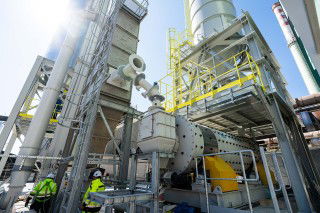Norway is attempting to give carbon capture and storage (CCS) a new start with an updated concept focussed on developing transport and storage infrastructure to attract interests from investors around Europe. This includes the transport of CO2 by boat instead of earlier plans to move CO2 by pipeline, but the European Commission has been cautious in its response stating that there is currently no specific new funding set aside for the technology.
The initiative to store CO2 1000m under the sea bed is being driven by Gassnova, a state-owned Norwegian company that is piloting the project. Trude Sunset, CEO of Gassnova said, "This is an infrastructure project. The good part is that the Norwegian government has said to industry that it would take particular responsibility for the transport and storage part."
In the demonstration phase, CO2 captured from a cement plant and waste incineration facility in Norway would be temporarily stored in large containers before being shipped to the coast for injection beneath the seabed.
However, Norway's full-scale demonstration project for CCS is evaluated at EUR1.6bn over five years. "It is probably too expensive for Norway to finance a full-chain CCS project without the participation of others," said Bjorn Haugstad, director general at the Norwegian ministry for petroleum, energy and climate.
Moreover, Christian Holzleitner, a senior official at the European Commission's environmental directorate, said: "Carbon capture is seen as a mix of technologies that could help EU reach carbon neutrality by mid-century. Don't expect our communication to say this is the way we should go."
Nothing has been decided yet. "We want very much to start a discussion," Mr Holzleitner stressed.
The EU Commission's 2050 low-carbon economy roadmap is due to be published on 28 November 2018. The Commission will seek receive input form interested parties before adopting its final strategy towards the end of 2019-early 2020.

Turning waste concrete and CO2 into a binder
In July, Heidelberg Materials switched on the first continuous-mode enforced carbonation reactor...